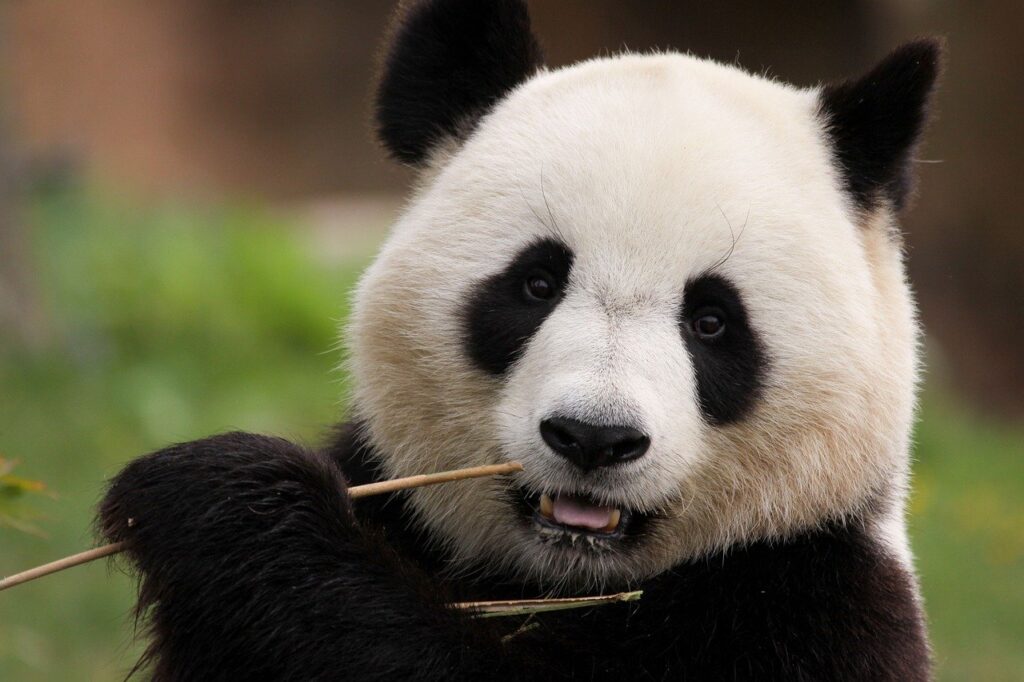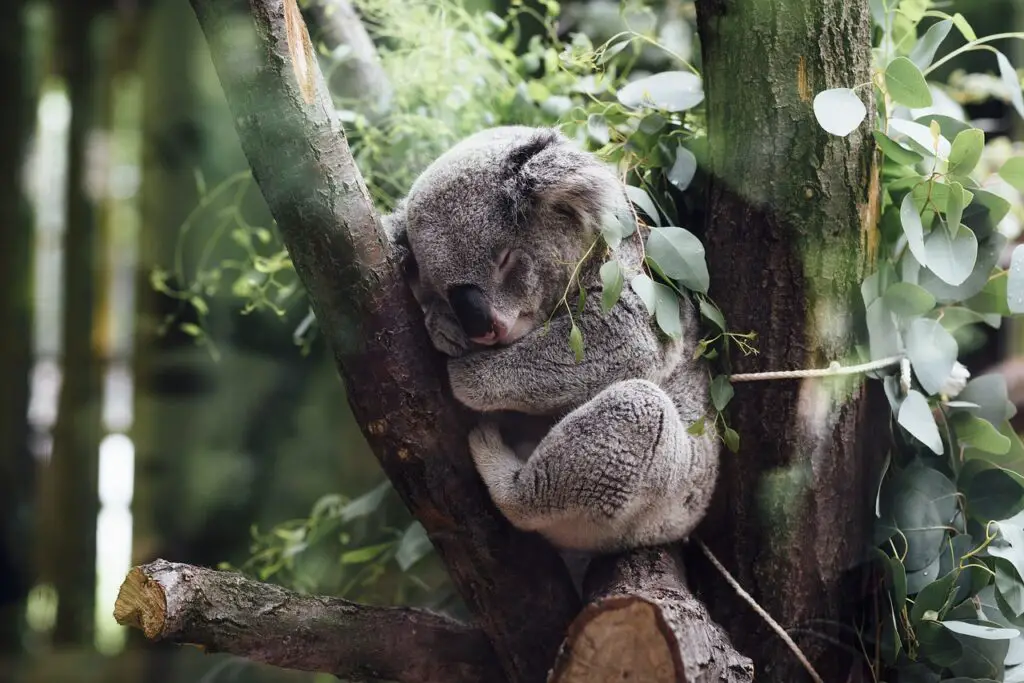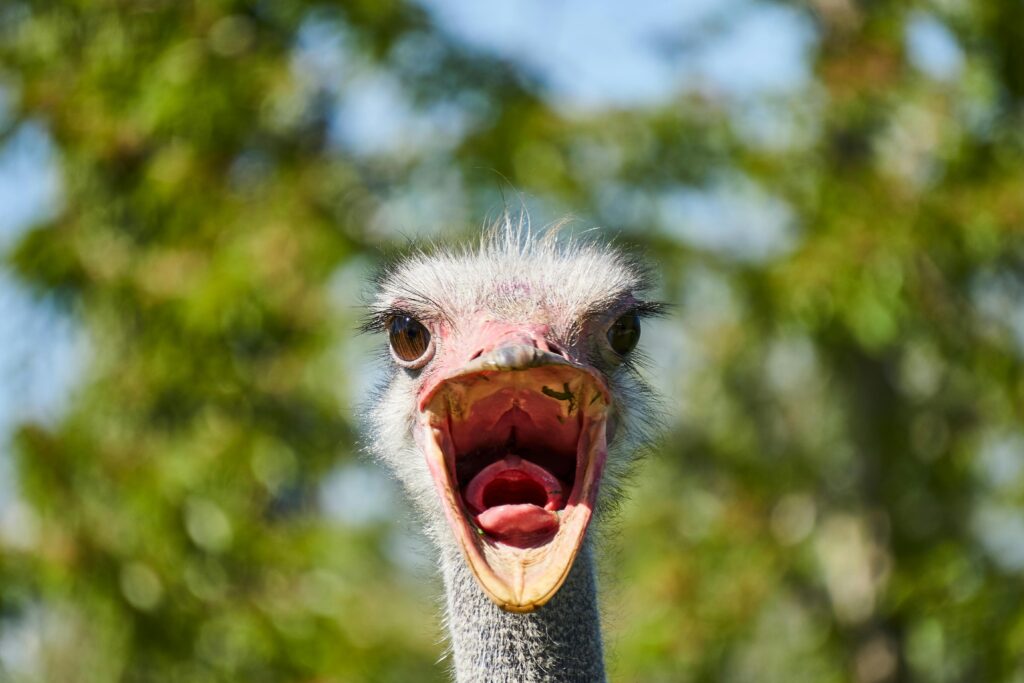Are you curious about the intelligence levels of animals? Have you ever wondered which creatures possess the lowest IQ?
In this article, we’ll explore the fascinating world of animals with limited cognitive abilities. From pandas to turkeys and kakapos to koalas, these animals face various challenges that impact their intellectual capacity. Whether it’s due to physical limitations, habitat constraints, or risk-taking behavior, these creatures struggle to navigate their environments.
Join us as we unravel the mysteries of their cognitive abilities and the unique challenges they face.
Note: Measuring animal intelligence is a complex task, and IQ scores are not directly applicable to animals. Instead, we can look at their problem-solving abilities, learning capabilities, and innovation to estimate their cognitive abilities.
| Animal | Estimated IQ (human equivalent) | Cognitive Abilities |
|---|---|---|
| Starfish (Sea Star) | 0.01-0.1 | Limited problem-solving abilities, mostly instinctual behavior |
| Jellyfish | 0.1-1 | Simple nervous system, mostly reactive behavior |
| Sponges | 0.1-1 | Basic sensory perception, no brain or nervous system |
| Cockroaches | 1-5 | Simple learning, instinctual behavior, and basic problem-solving |
| Fish (some species) | 1-10 | Limited problem-solving, mostly instinctual behavior |
| Worms (some species) | 1-10 | Simple learning, basic problem-solving, and instinctual behavior |
| Snails | 1-10 | Slow learning, mostly instinctual behavior |
| Slugs | 1-10 | Similar to snails, slow learning, and mostly instinctual behavior |
Here’s a brief explanation for each animal:
- Starfish (Sea Star): While they can move and feed, starfish have a relatively simple nervous system and limited problem-solving abilities.
- Jellyfish: Jellyfish have a basic nervous system, but their behavior is mostly reactive, and they don’t exhibit complex problem-solving abilities.
- Sponges: Sponges are simple multicellular organisms with no brain or nervous system. They respond to stimuli, but their behavior is largely instinctual.
- Cockroaches: While often considered pests, cockroaches have relatively simple learning abilities and can adapt to their environment. However, their problem-solving abilities are limited.
- Fish (some species): Some fish species, like guppies or goldfish, have relatively simple cognitive abilities and mostly rely on instinct.
- Worms (some species): Some worm species, like earthworms, have simple learning abilities and can adapt to their environment. However, their problem-solving abilities are limited.
- Snails and Slugs: These gastropod mollusks have relatively slow learning abilities and mostly rely on instinct. While they can adapt to their environment, their problem-solving abilities are limited.
Keep in mind that these estimates are rough and based on various studies, and the concept of IQ is not directly applicable to animals. Each species has evolved unique cognitive abilities to thrive in their environment, and this table should not be seen as a definitive ranking of animal intelligence.
Now, let’s discuss animals you never thought of! You will be suprised!
Key Takeaways
- Pandas, turkeys, kakapos, koalas, and flamingos are animals with limited cognitive abilities due to physical limitations or habitat constraints.
- Sloths, jerboas, and ostriches are animals with slow or lethargic behavior.
- Komodo dragons, turkeys, and ostriches are animals with limited cognitive abilities and risk-taking behavior.
- Kakapos, koalas, and komodo dragons are animals with limited cognitive abilities and vulnerability to threats.
Pandas: Sluggish and Unintelligent Animals
If you ever encounter a panda, you might be surprised by their sluggishness and lack of intelligence. Pandas, scientifically known as Ailuropoda melanoleuca, are large, bear-like mammals native to China.

One example of why pandas are often considered to have low intelligence is their feeding behavior. In the wild, pandas have been observed to spend up to 16 hours a day eating bamboo, and they have a very specialized digestive system that allows them to digest the cellulose in bamboo. However, this specialization comes at the cost of cognitive abilities, as pandas have been known to ignore other food sources, even when they are readily available and more nutritious.
For instance, in captivity, pandas have been offered a variety of fruits and vegetables, but they often show little interest, preferring to stick to their bamboo diet. This inflexibility and lack of adaptability in their feeding behavior is often cited as an example of their limited problem-solving abilities and low cognitive flexibility, which are characteristics often associated with lower intelligence.
The impact of these characteristics can be seen in various aspects of the panda’s life, including reproduction. Pandas have a limited breeding season, typically occurring in the spring. However, due to their low energy levels, pandas often face mating challenges. Female pandas are only receptive for a brief period, and male pandas may struggle to locate and successfully mate with a receptive female. This difficulty in reproduction has had a significant impact on the panda population, contributing to their endangered status.
Additionally, the lack of intelligence in pandas affects their ability to adapt to changes in their environment. They have a limited ability to recognize and respond to threats, making them vulnerable to predation and habitat destruction. The combination of their sluggishness and low intelligence has further contributed to the decline of the panda population.
Turkeys: Perceived as Lacking Intelligence
When it comes to animals with the lowest IQ, turkeys are often perceived as lacking intelligence due to their physical appearance and engaging in thoughtless behavior. However, these perceptions are based on intelligence myths rather than actual scientific evidence.

Turkeys possess cognitive abilities that allow them to navigate their environment, communicate with each other, and adapt to changing circumstances.
While turkeys may not exhibit complex problem-solving skills or demonstrate the same level of cognitive abilities as some other animals, they’re far from unintelligent. Turkeys are social animals that live in flocks and engage in cooperative behaviors. They’ve been observed to communicate through a variety of vocalizations, body postures, and displays, indicating a certain level of cognitive sophistication.
Turkeys also demonstrate a keen sense of awareness and are capable of recognizing and reacting to potential threats. They’re known to be highly vigilant creatures, constantly scanning their surroundings for signs of danger. This ability to assess risk and respond accordingly suggests a level of cognitive processing and decision-making.
One example that illustrates why turkeys are often considered to have low intelligence is their tendency to drown in the rain. Turkeys have a natural instinct to look up at the sky when it rains, and they will often continue to do so even when the rain is pouring down their beaks and into their lungs, ultimately causing them to drown. This behavior is often cited as an example of their limited problem-solving abilities and lack of adaptability, as they seem unable to connect the rain with the water accumulating in their beaks, or to take the simple action of tilting their heads to avoid the water. This behavior has been observed and documented by farmers and animal behaviorists, and is often used as an anecdote to illustrate the perceived limitations of turkey intelligence.
Koalas: Lack Intelligence and Escape Instinct

Koalas’ lack of intelligence and escape instinct make them vulnerable to threats. Here are three reasons why:
- Limited Learning: Koalas have a limited ability to learn and adapt to their environment. Their diet consists mainly of eucalyptus leaves, which provide low nutritional value and can be toxic to other animals. This narrow diet restricts their ability to explore and learn from new food sources, limiting their cognitive development.
- Inefficient Escape Mechanisms: Unlike other animals, koalas lack the instinctual ability to recognize and respond to danger effectively. When faced with threats, such as predators or habitat destruction, they often freeze or climb to the top of a tree, putting themselves at further risk. This lack of escape instinct makes them easy targets for predators and increases their vulnerability to human activities.
- Vulnerability to Diseases and Bacteria: Koalas are susceptible to various diseases and bacteria, such as chlamydia and koala retrovirus, which can lead to reproductive issues, blindness, and even death. Their weakened immune system, coupled with their limited intelligence, makes it challenging for them to recognize and avoid potential sources of infection.
Jerboas: Struggle to Learn How to Jump
Jerboas, small rodents found in arid regions, face significant challenges when it comes to learning how to jump. Their struggle to master this basic skill raises questions about the impact of limited learning on their overall cognitive abilities.
Jerboas, small rodents found in arid regions, face significant challenges when it comes to learning how to jump. Their struggle to master this basic skill raises questions about the impact of limited learning on their overall cognitive abilities. For jerboas, jumping is not just a recreational activity, but a crucial survival mechanism that enables them to escape predators, navigate their desert habitat, and even find food and shelter. However, their limited learning capacity hinders their ability to develop and refine this essential skill, leaving them vulnerable to threats and struggling to thrive in their environment.
Furthermore, the cognitive limitations of jerboas may have far-reaching consequences that extend beyond their physical abilities. Research suggests that the brain’s neural pathways are closely linked, and deficiencies in one area can have a ripple effect on other cognitive functions. Therefore, the struggles jerboas face in learning to jump may be indicative of broader cognitive limitations that impact their problem-solving abilities, memory, and even social behavior.
This raises important questions about the evolutionary pressures that have shaped the cognitive abilities of jerboas and other desert-dwelling species, and whether their unique environment has led to adaptations that prioritize specialized survival strategies over general intelligence. As scientists continue to study the cognitive abilities of jerboas, they may uncover valuable insights into the intricate relationships between environment, behavior, and cognition.

Jerboas are not necessarily considered to be of low intelligence, but rather, they have a unique cognitive profile that is adapted to their environment and lifestyle. Jerboas are small, nocturnal rodents that live in arid and semi-arid regions, and their intelligence is specialized to help them survive in these environments.
That being said, jerboas may not perform as well as other rodents in certain cognitive tasks, such as problem-solving or learning and memory, due to several reasons:
- Evolutionary pressures: Jerboas have evolved to thrive in environments with limited resources, where survival depends on finding food and avoiding predators. As a result, their cognitive abilities may be more focused on instinctual behaviors, such as foraging and predator avoidance, rather than complex problem-solving.
- Brain structure: Jerboas have a relatively small brain-to-body mass ratio compared to other rodents, which may limit their cognitive abilities. However, this smaller brain size may be an adaptation to reduce energy expenditure in environments with limited food resources.
- Specialized senses: Jerboas have highly developed senses, such as exceptional hearing and vision, which help them detect predators and find food in their environment. While these senses are crucial for their survival, they may not be as relevant to cognitive tasks that require problem-solving or learning.
Here are a few examples of jerboa behavior that might be misinterpreted as “low intelligence”:
- Limited problem-solving: Jerboas may not be able to solve complex problems, such as navigating mazes or finding hidden food, as efficiently as other rodents. This could be due to their specialized cognitive profile, which prioritizes instinctual behaviors over problem-solving abilities.
- Short-term memory: Jerboas may not have the same level of short-term memory as other rodents, which could make it more difficult for them to learn and recall certain tasks. However, this may be compensated by their exceptional spatial memory, which helps them navigate their environment.
- Social behavior: Jerboas are primarily solitary animals and may not exhibit the same level of social complexity as other rodents, such as rats or mice. This could be misinterpreted as a lack of intelligence, when in fact, it is an adaptation to their environment and lifestyle.
It’s essential to remember that intelligence is a complex and multi-faceted trait that cannot be reduced to a single metric or comparison. Jerboas have evolved to thrive in their environments, and their cognitive abilities are specialized to help them survive and reproduce.
Ostriches: Display Thoughtless and Reckless Behavior

Ostriches demonstrate thoughtless and reckless behavior, posing risks to their own safety and survival. This behavior can be observed in several ways:
- Head in the Sand: Ostriches have the ability to run at impressive speeds of up to 60 miles per hour, yet when faced with danger, they often choose to bury their heads in the sand. This ineffective strategy leaves them vulnerable to predators and fails to utilize their physical abilities for escape.
- Careless Nesting: Ostriches construct large nests in the ground where they lay their eggs. However, they show little regard for the location of their nests, often selecting open areas without proper cover. This haphazard approach makes their nests easily visible to potential threats, leading to a higher risk of predation.
- Aggressive Behavior: Ostriches are known for their aggressive nature. Instead of employing strategic behaviors for self-defense, they often resort to thoughtless attacks. This reckless behavior not only puts themselves at risk but also endangers other animals in their vicinity.
These thoughtless and reckless behaviors of ostriches have consequences for their own safety and survival. By failing to effectively utilize their physical abilities, selecting vulnerable nest locations, and engaging in aggressive behavior, ostriches increase their susceptibility to predation and other threats.
Komodo Dragons: Act on Instinct, Endanger Themselves
Komodo Dragons instinctively put themselves in danger by their actions. These large reptiles, native to the Indonesian islands, exhibit risky behavior that can have a significant impact on their population. One of the main challenges they face is related to mating.

Komodo Dragons engage in intense competition for mates, often resulting in violent confrontations between males. During these battles, they risk sustaining severe injuries, including broken bones and deep wounds. Additionally, their aggressive behavior can lead to a decrease in overall population numbers if too many individuals are killed or injured.
Another mating challenge for Komodo Dragons is their tendency to eat excessively. Male Komodo Dragons have been observed consuming large prey items, such as deer or pigs, in order to increase their body size and enhance their chances of mating success. However, this behavior can be detrimental to their health. Overeating can lead to obesity, which negatively impacts their agility and ability to hunt effectively. In extreme cases, it can even result in death.
The impact of these mating challenges on the Komodo Dragon population is significant. The risk of injuries and fatalities during mating battles can reduce the number of reproductive individuals, potentially leading to a decline in genetic diversity. Additionally, the negative consequences of overeating can further decrease their overall fitness and reproductive success.

Erzsebet Frey (Eli Frey) is an ecologist and online entrepreneur with a Master of Science in Ecology from the University of Belgrade. Originally from Serbia, she has lived in Sri Lanka since 2017. Eli has worked internationally in countries like Oman, Brazil, Germany, and Sri Lanka. In 2018, she expanded into SEO and blogging, completing courses from UC Davis and Edinburgh. Eli has founded multiple websites focused on biology, ecology, environmental science, sustainable and simple living, and outdoor activities. She enjoys creating nature and simple living videos on YouTube and participates in speleology, diving, and hiking.
🌿 Explore the Wild Side!
Discover eBooks, guides, templates and stylish wildlife-themed T-shirts, notebooks, scrunchies, bandanas, and tote bags. Perfect for nature lovers and wildlife enthusiasts!
Visit My Shop →
